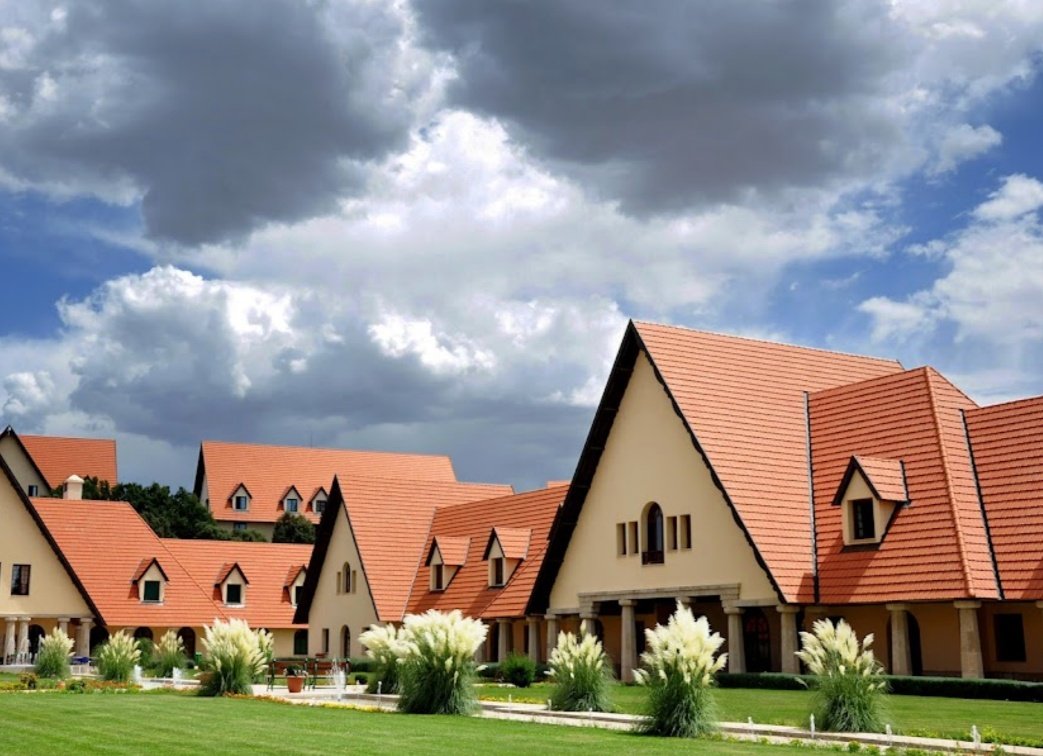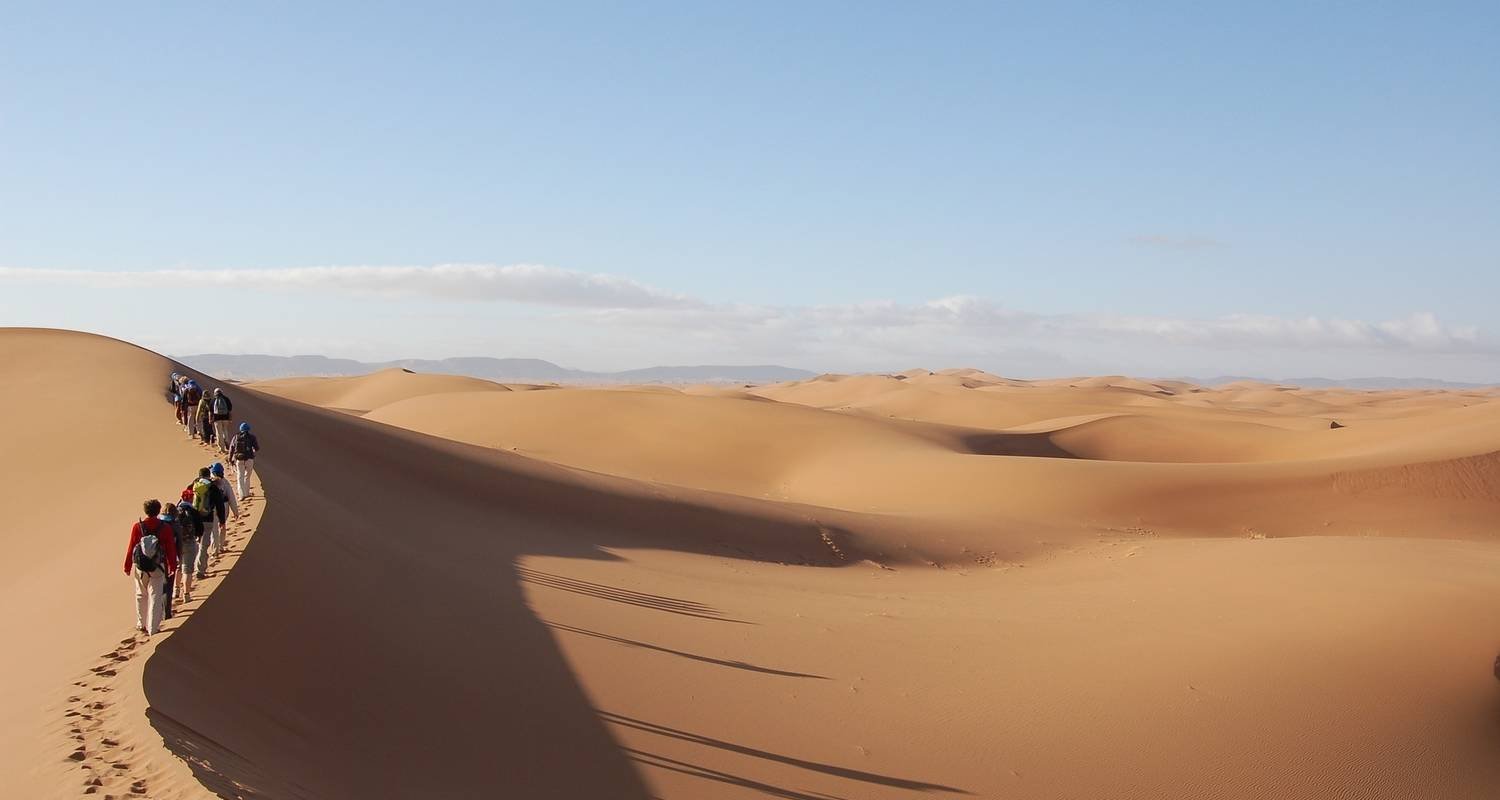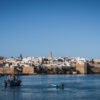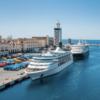Plenty of hotels like to include a regal signifier in their name. Others promise to treat you like royalty. But when do you get the real deal? If you know, you know, I now realise — and not just from the little bows the security guards give me as I wander to breakfast.
I used to think the British royal family’s portfolio of holiday lets was impressive: there are nine cottages at Balmoral and others at Sandringham. The Castle of Mey Trust, which is chaired by the King, has a cottage and a luxury B&B called the Granary Lodge, and thanks to the design services of Annabel Elliot, sister of the Queen, things are also pretty glam at the 25 cottages and houses the Duchy of Cornwall rents out.
However, the UK monarchy’s holiday-home side hustle pales in comparison with Mohammed VI of Morocco. His first hotel, the Royal Mansour in Marrakesh, opened in 2010 as a sensory deep-dive with romantic courtyards, intricate marquetry and rich tagines and pastillas. A second hotel opened nine months ago in the landmark 1953 El Mansour building in Casablanca after an eight-year renovation that brought in glass walkways and 70 types of marble. Now the third hotel in the group — a beach resort just outside the city of Tetouan in northern Morocco — has opened with 55 rooms and villas.

With balmy temperatures nearly all year round, Tamuda Bay has long been an escape for posh Moroccans. It’s in the greenest part of the country, thanks to the Rif mountain range that sends water into the valleys and also provides a beautiful backdrop. The hotel sits on a golden stretch of sand between a marina and rocky peninsula on the Mediterranean coast, where — compared with Morocco’s breezy Atlantic resorts — sea and ambience are more gentle. In recent years, other luxury brands, including Ritz-Carlton and St Regis, have set up shop around Tamuda Bay, but the Royal Mansour Tamuda Bay is its first home-grown five-star hotel.
Having a royal backer gives you serious pulling power when it comes to chefs. At the Royal Mansour, La Table is helmed by Éric Frechon, whose Paris restaurant has kept three Michelin stars for more than 15 years. The meal I have here includes artichoke with anchovies followed by lamb and tabbouleh salad. It has all the confident simplicity you would want (mains from £41).
Coccinella, run by the Italian Alajmo brothers, has a beach-appropriate informality about it, with guacamole made to order in front of you (mains from £22). But it’s the restaurant, Le Méditerranée, that steals my heart. Here, the Spanish chef Quique Dacosta, whose other restaurants have seven Michelin stars between them, plays with the links between Spanish and Moroccan culture, pairing scorpion fish with dried fruit and mint, and paellas with squid ink, while the waves lap just outside (mains from £30).

The hotel is so new that Dacosta is visiting his kitchen to check everything is working well (it is), and I see him cycling to his villa on one of the Danish-designed Velorbis bicycles guests can use (there are also golf carts provided to get around the ten hectares of grounds).
The villas have their own swimming pools with heaped sand dunes and foliage for privacy, but the grandest of all is the royal suite with three bedrooms, three swimming pools, its own hammam and spa — but even here the interiors are casual with low-slung cream sofas.
From the hotel’s decor, you wouldn’t know “the king next door” owns the place (Mohammed has a residence on the same stretch of beach), which feels impressive considering the crimson-and-gilt retina burn I got a few years ago on a tour of Buckingham Palace. The rooms are cream, apple-green and light blue with the occasional injection of Gauloises blue.

Moroccan craftsmanship has been emphasised and the cushion curation is superb. (Is this why the Moroccan king is rarely seen in public — is he too busy looking at colour swatches for soft furnishings? Probably not, but it’s a nice thought.) I covet nearly everything, from the striped parasols around the pool and beach to the linen frock coats worn by the staff at the front desk.
I suppose having a dynasty that stretches back centuries is useful when it comes to playing the long game — it will take a long time to recoup the amount a hotel like this costs to build. It’s open year-round, so all of the swimming pools are heated. There’s also a spa with an indoor pool, a gym and a hair salon with a massage chair. Offerings at the kids’ club range from cartoons to chess.
• Morocco travel guide
What better training can there be for a hotelier than a lifetime of people anticipating your every whim, whether you want them to or not? Regardless of regal input, there’s thoughtfulness to hospitality here. When I leave my sundress next to a lounger at the pool, not only does someone pick it up but a hanger appears and I watch it being delicately hung up, to my initial mortification. Breakfast comes with croissants, cappuccino and entreaties to try amlou, a delicious spread of ground roasted almonds, honey and argan oil.
Eager to find something to criticise, I light upon there being no power point, let alone a USB charge point, by the bed in my entry-level room (a generous 80 sq m). An oversight in this day and age, I think, before I discover they have been hidden in the bedside drawer, which opens and shuts in a delightfully satisfying way. This, the geometric mosaics and zellige tiling, and the occasional wall studded with shells (sourced ethically, I’m assured), make me realise I can’t think of a hotel that has ever given me more of a sensory hit. The gardens — still being planted on my visit — have a profusion of mint and rosemary amid palms and gnarled olive trees.

Another example of monarch snap: like King Charles, King Mohammed is a champion of traditional crafts and supports a college devoted to them near Tetouan, a 20-minute drive away. It opens to visitors every day except Sunday. But I head into the city of Tetouan, where boulevards laid by the Spanish in the 19th century contrast with the winding lime-washed medina where you can see woodworkers and tanners in their workshops. It was designated a Unesco world heritage site in 1985.
Tetouan is the Moroccan city with the strongest links to Spain, starting in the 15th century when Spain’s Jewish and Muslim populations fled here during the Spanish Inquisition. By 1860, it was part of Spain and was only returned to Morocco in 1956, but it is also rich in Berber history. For every stall with straw hats and jewellery, there’s another selling fruit and vegetables grown in a nearby village, while side streets have shops and cafés heaped with delicate pastries.
Compared with Marrakesh, there are few tourists. The reason may be that Tetouan and Tamuda Bay are not that easy to reach for Brits. The nearest airport with flights from the UK is Tangier, which is a 90-minute drive away. However, Tetouan airport has direct flights from France and Spain, and I suspect it’s only a matter of time before a UK airline joins them. I can’t help feeling that the hotel’s owner may be able to make this happen.
Sarah Turner was a guest of the Royal Mansour Tamuda Bay, which has B&B doubles from £350 (royalmansour.com)
Do you have a favourite Morocco hotel? Let us know in the comments
Five more coastal Moroccan hotels
By Ellen Himelfarb
1. Villa Mabrouka, Tangier

This mid-century villa peeking out from thick, fragrant parkland was designed for the Morocco stalwarts Yves Saint Laurent and Pierre Bergé before being adapted for Tangier’s burgeoning hospitality industry. The 12 guest rooms, redecorated by Jasper Conran in Miami greens and blues with modern Moorish twists, are nothing short of delightful, each with a sweeping view of the serpentine pool and exotic garden follies. The ocean is a few metres off, overlooked by Phoenician tombs and a sultan’s tower, though it’s hard to justify braving the sandy, salty breeze when a team of crisply suited servers are so eager to bring a gin to your perch on the veranda, roof terrace or in the lovingly manicured gardens.
Details B&B doubles from £299 (villamabrouka.com). Fly to Tangier
2. Salut Maroc, Essaouira

Even if outré zellige tilework isn’t your cup of mint tea, you can’t deny Salut’s spectacular location. Within the ancient city walls of Morocco’s foremost resort town, the hotel sits with the souk behind and the wild surf straight ahead. For £250 the Boudoir Seaview Double offers a more subtle expression of Moroccan handiwork, with a deep copper tub for a spot of indulgent relaxation. Despite the small footprint of this old merchant’s house, there’s plenty of luxury to cap off a sweltering day: a traditional hammam, a wraparound balcony and a sheltered roof terrace where you can breakfast while watching fishermen on the shore hand over the fish for your dinner — it’s open until 10.30pm each night for meals and cocktails.
Details Room-only doubles from £150 (salutmaroc.com). Fly to Essaouira
• 14 of the best hotels in Morocco
3. La Fiermontina Ocean, Larache

The family-run Fiermontina group chose the Côte Sauvage, just south of Tangier, for its first Moroccan property: a hilltop retreat overlooking the protective sand dunes and the forest trails of Khemis Sahel national park. The property has 11 modern standalone suites, each with its own pool and garden, as well as two beautifully restored traditional villas further inland, near the forgotten village of Dchar. All guests have access to a central resort building, complete with a mid-century-style bar and lounge, a marble hammam, a communal pool and a restaurant where villagers from Dchar serve crêpe breakfasts and tagine dinners. But the real draw here is the breathtaking view and the invigorating embrace of the wild sea.
Details Room-only doubles from £220 (lafiermontinaocean.com). Fly to Tangier
4. La Sultana, Oualidia

The tidal lagoon that shields Oualidia’s coast has one of the most spectacular vistas of a rich Atlantic ecosystem, where salt marshes, oyster beds and flamingo-studded shoals create a serene landscape. Naturally, water is a central theme at this calm oasis halfway down the Moroccan coast; it trickles through indoor pools, hammam baths and private hot tubs to the outdoor freshwater pools and the sea beyond. Dining terraces are designed to maximise views, with some set in Moroccan tents on the sand. The menus specialise in oysters, crab and a signature bouillabaisse. Yet the fortress-like architecture and rich, stately-home decor may distract you still. The deep upholstered seating, earthy marble, carved wood and stained glass lend a decadent harem-like feel to the interiors.
Details Room-only doubles from £519 (lasultanahotels.com). Fly to Casablanca or Marrakesh
5. Four Seasons Kasr Al Bahr, Rabat

The Four Seasons recently transformed this “palace by the sea”, as it is called, from a sultan’s summer retreat into a luxury stay that hundreds of mere mortals can enjoy — albeit those of means. Raising it to the standards of Morocco’s bright, buzzing capital, the group amped up the traditional appeal with refreshed mosaic tile and marble work, and a wow-factor atrium foyer with a surreal two-pronged staircase and streamlined furnishings. The echoing double-height hammam and pristine palm-fringed pool add to the allure, as do the Premier rooms with their views of the sea and the historic kasbah, five minutes away by car.
Details Room-only doubles from £410 (fourseasons.com). Fly to Rabat










